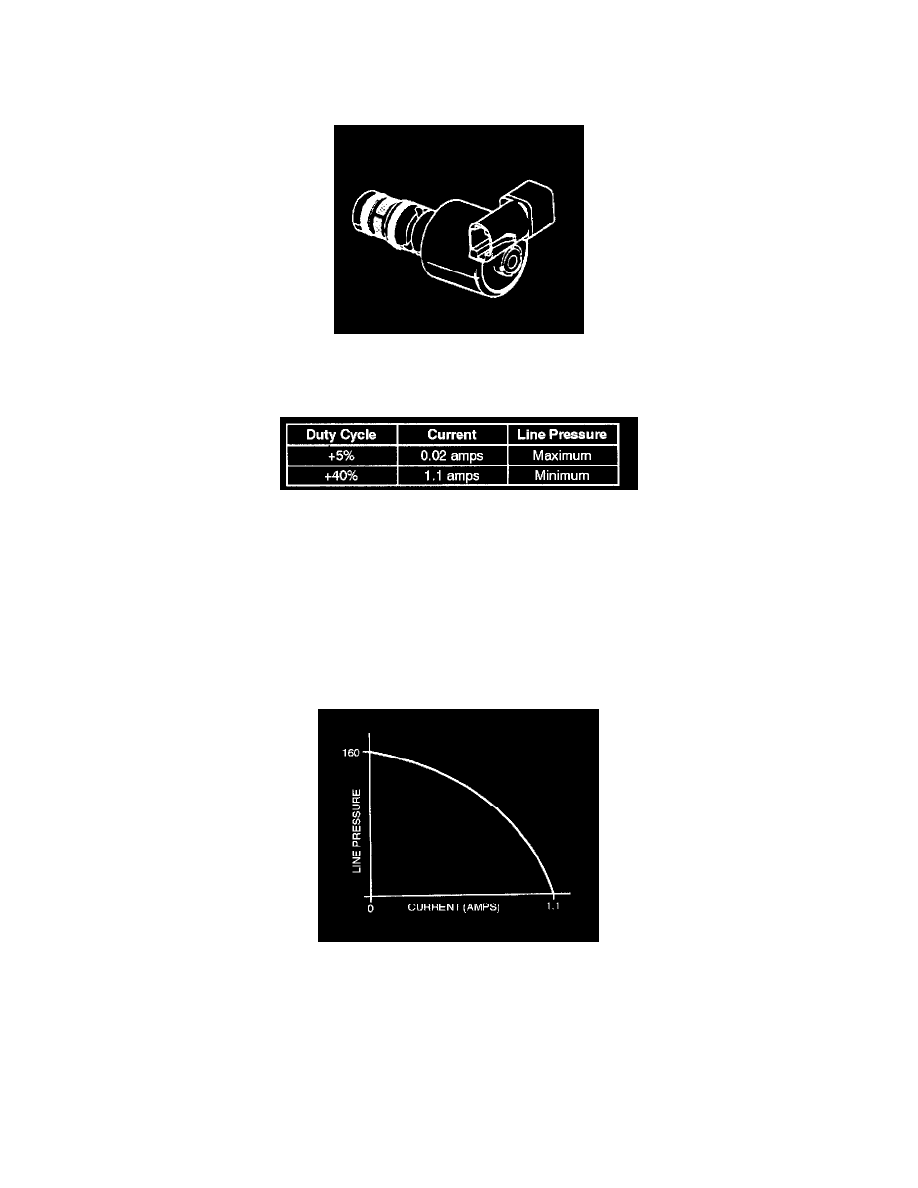Nubira SE Sedan L4-2.0L DOHC D-TEC MFI (2001)

Pressure Regulating Solenoid: Description and Operation
PRESSURE CONTROL (PC) SOLENOID VALVE
The Pressure Control (PC) solenoid valve is a precision electronic pressure regulator that controls transaxle line pressure based on current flow
through its coil windings.
As current flow is increased the magnetic field produced by the coil moves the solenoid's plunger further away from the exhaust port. Opening the
exhaust port decreases the output fluid pressure regulated by the PC solenoid valve, which ultimately decreases line pressure. The PCM controls the
PC solenoid valve based on various inputs including throttle position, fluid temperature, MAP sensor and gear state.
The PCM controls the PC sol. valve on a positive duty cycle at a fixed frequency of 614 Hz (cycles per second).
Duty cycle is defined as the percent of time current is flowing through the solenoid coil during each cycle. A higher duty cycle provides a greater
current flow through the solenoid. The high (positive) side of the PC solenoid valve electrical circuit at the PCM controls the PC sol. valve operation.
The PCM provides a ground path for the circuit, monitors average current and continuously varies the PC sol. valve duty cycle to maintain the correct
average current flowing through the PC sol. valve.
Pressure control solenoid valve resistance should measure between 3.5 and 4.6 ohms when measured at 68° F (20° C).
Transmission Adapt Function
The 4T40-E uses a line pressure control system which has the ability to continuously adapt the system's line pressure (increase as needed) to
compensate for normal wear of clutch fiber plates, seals, springs, etc. This "learning" feature is similar to what is used for fuel control
(integrator/block learn) and throttle position (idle learn). The PCM maintains several adapt parameters for the transaxle:
-
Upshift Adapt - The PCM monitors the input shaft speed sensor and VSS during commanded shifts to determine if a shift is occurring too fast
(harsh) or too slow (soft) and adjusts the transaxle pressure control solenoid signal to maintain a set shift feel.
